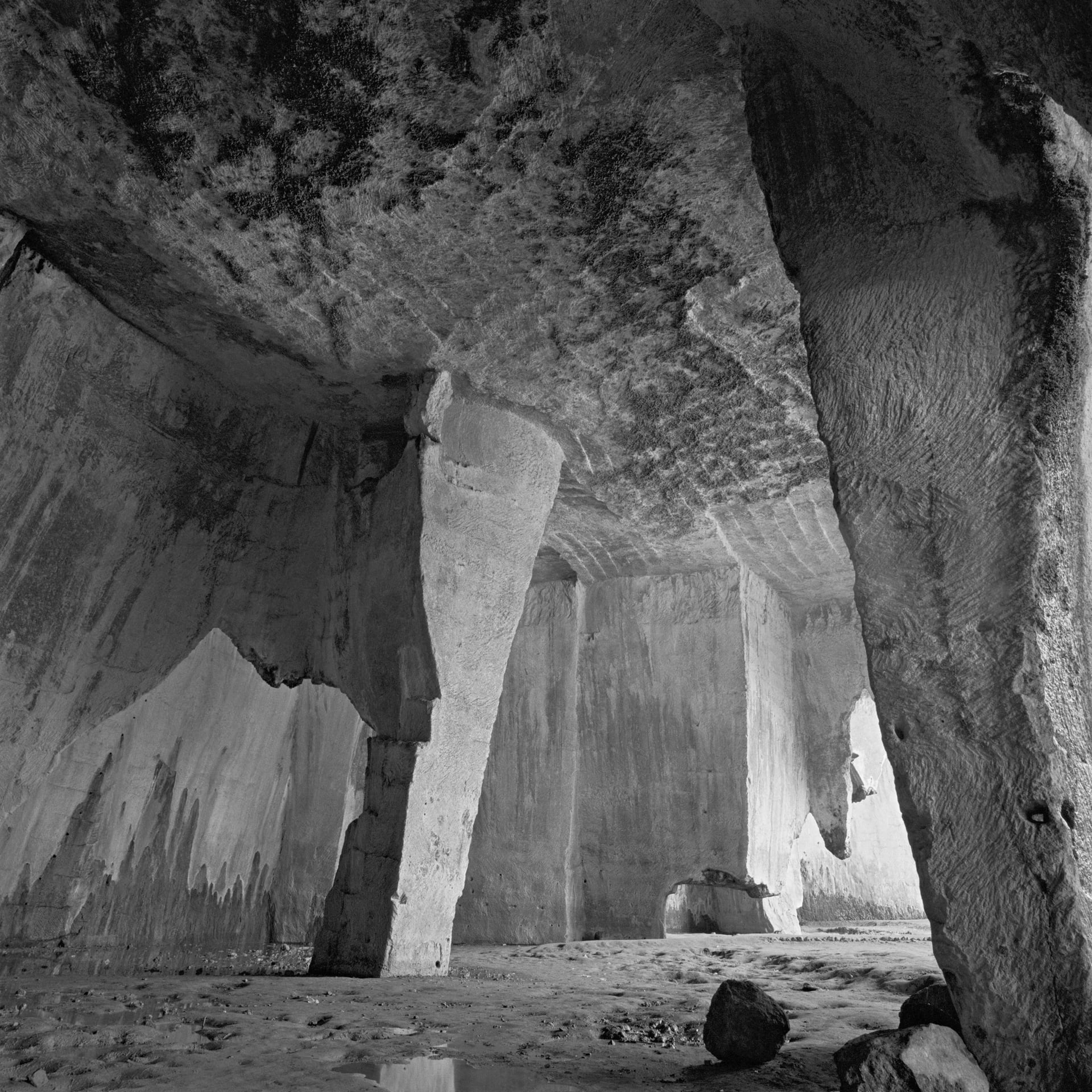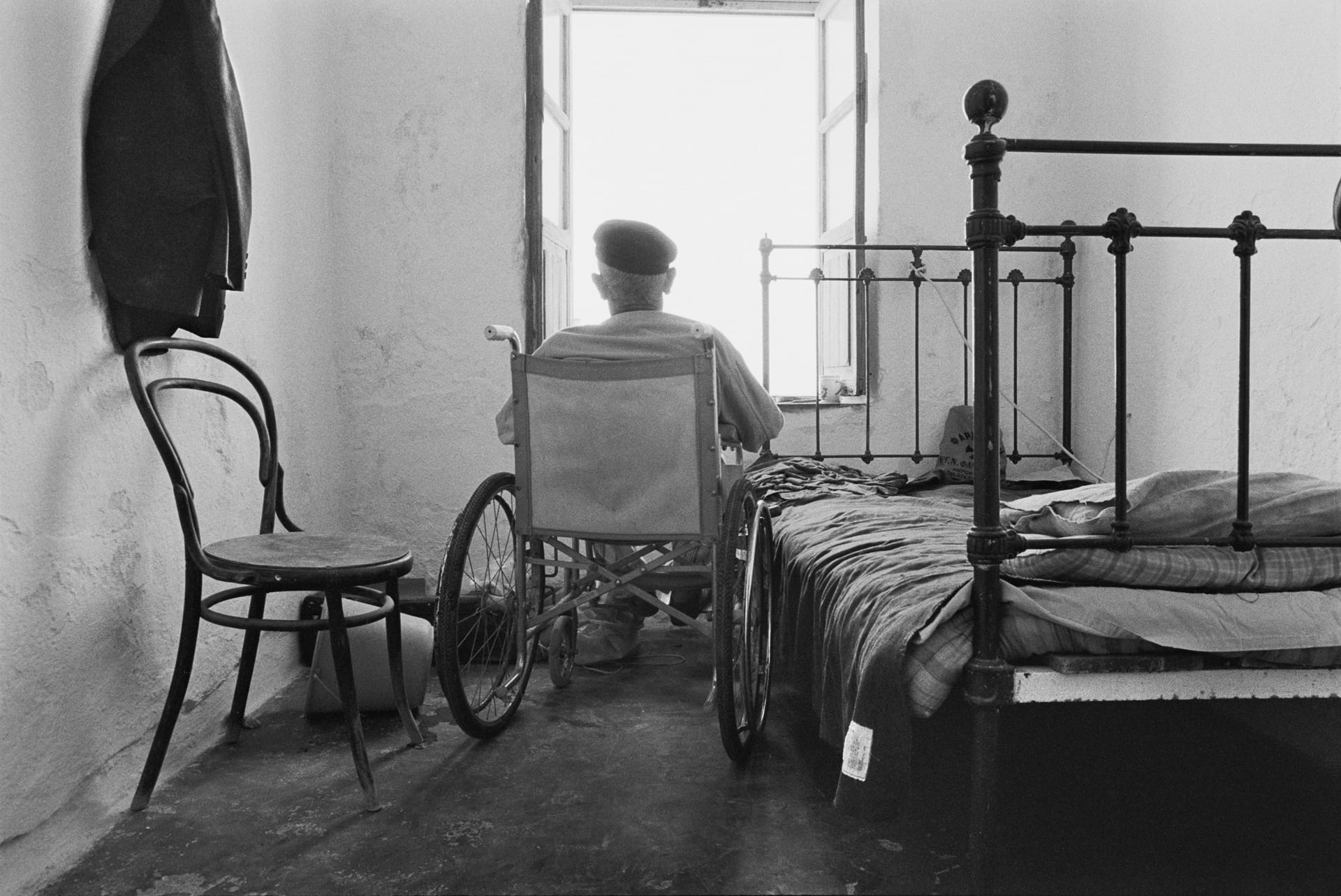1977–1980
Formation
In 1977 I was admitted to the famous Fotoklasse of the Zurich School of Arts and Craft (now part of Zurich University of the Arts). It was said that Edward Steichen had attended Hans Finsler’s class in search of photographs to be included in the seminal Family of Man exhibition. In the event, he had struggled to find any at all amidst the neatly mounted prints of eggs and porcelain. The Bauhaus-inspired Neue Sachlichkeit looked at things rather than at life. The first student in the class, Werner Bischof, needed the shock of postwar Europe to shelve his pebbles and snail shells; but the technique of the school had entered his blood and helped him to come to terms with the moral questions raised by the world waiting for him. Bischof was set on his path by Arnold Kübler, a journalist and founding editor-in-chief of DU magazine (which would become a decisive factor in my own curriculum for many years; some even say that there are parallels between Bischof’s way and mine).
At the time I attended the Fotoklasse, photography was about to emerge as an independent art form. And as an excursion to the documenta in Kassel made clear, no limits were to be imposed on the possibilities of the medium. Looking at Arbus’ portraits I thought not of art but of drama. These were the opposite of Brancusi’s photographs of his sculptures, the other end of the spectrum that I was about to overlook, with Ugo Mulas and Robert Frank somewhere in between. The Fotoklasse had a subscription to Camera, an exquisite magazine of international photography. Its black-and-white images (Koudelka, Stettner, Stömholm) renewed my earlier longing associated with my first camera (I know I had my own Contax and could use the school’s Hasselblads), as it seemed to permit existential quests, whereas color was met with suspicion. The revenues from a project commissioned to prevent the closure of a railway line deep into the Glarus Valley enabled the class to travel to Catania just as Etna erupted, killing many on the crater’s edge. The “decisive moment” thus took on a very different meaning—also because it gave me a chance to observe how hammer and shovel brought the stream of lava to a halt not just at the chapel wall but right in front of the altar.
The Fotoklasse darkroom technique was applied to Edward Weston-inspired peppers—found on the morning market, photographed, processed, printed, and then eaten by way of a frugal repast whilst looking at the mounted print. A letter arrived from Ansel Adams, in which the Zone System saint acknowledged the high-key values of the white church in Greece that I had ventured to send him. The real test, however, both in bridging high contrast and mastering square format, would be a wooden chair in a defunct spa on an obscure Aegean island.
Graduating from the Fotoklasse in 1980, I took over the studio and darkroom from my teacher Rudolf Lichtsteiner at Baumgasse 10 (just opposite the School of Arts and Crafts and the museum (he had had the ceiling painted black to avoid reflections when arranging his poetically surrealist compositions). Looking at the stack of my books and my cameras, I indulged a sense of astonishment that formation, in fact, had just begun.
En Route
- 1987–the presentEntanglements
- 1977–the presentFaces
- 1991Iran – Kurdish Exodus
- 1990Georgia – Journey Through the End of an Era
- 1989Istanbul – Tanneries
- 1987China – Between the Walls
- 1987China – Undermining Buddha
- 1986Prague – Sentimental Journey
- 1986Egypt – Small Tour
- 1986–2010Zurich – Brief Encounters
- 1982–1986Silhouettes and Accessories
- 1977–1980Formation
- 1972–1976First Exposures





